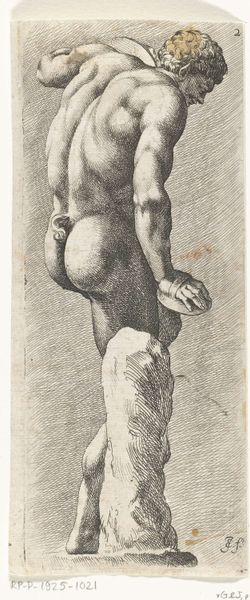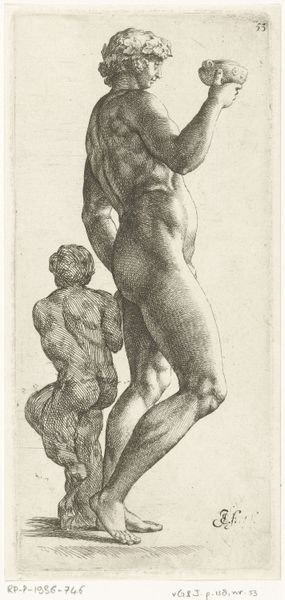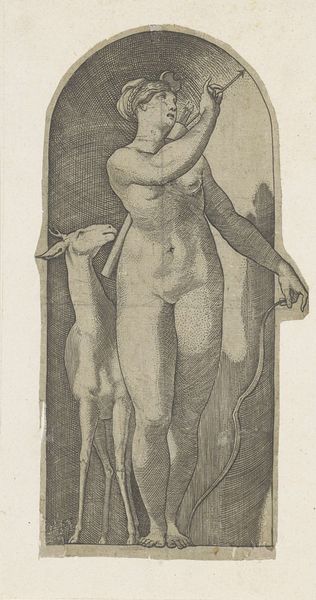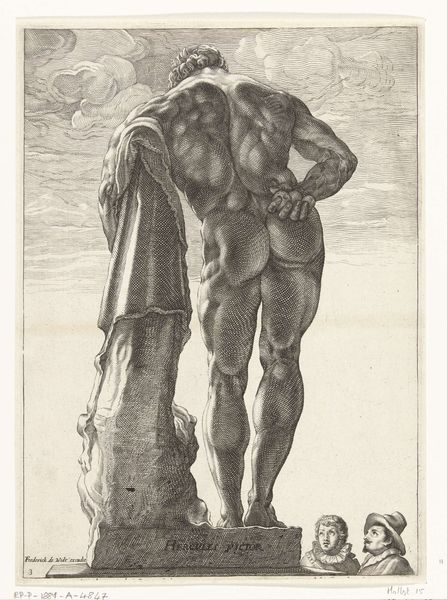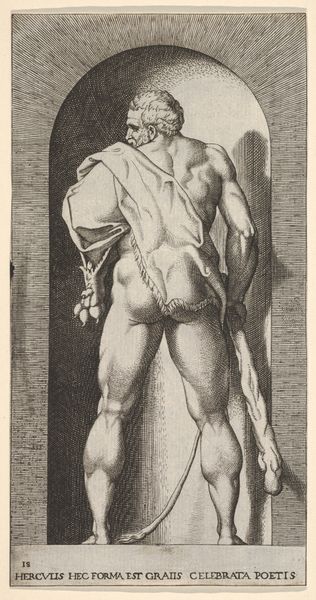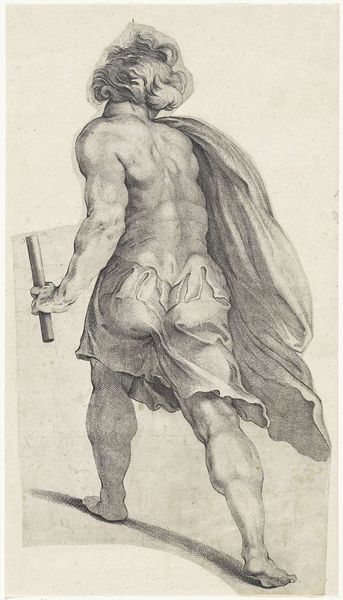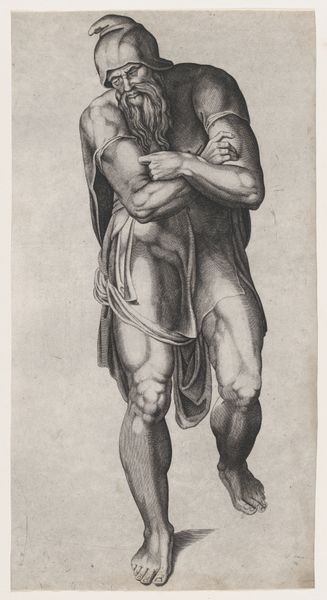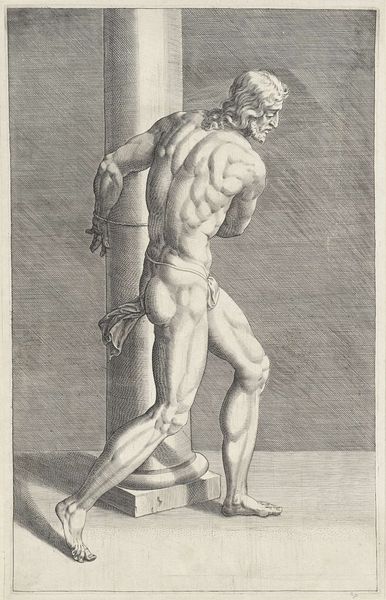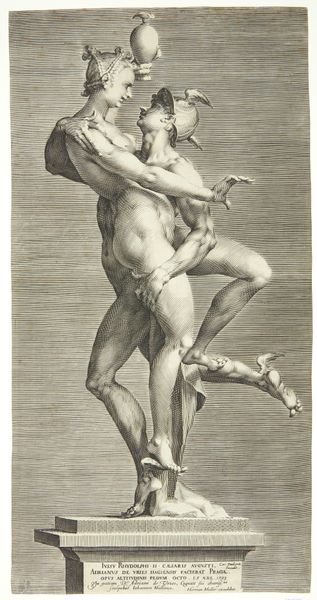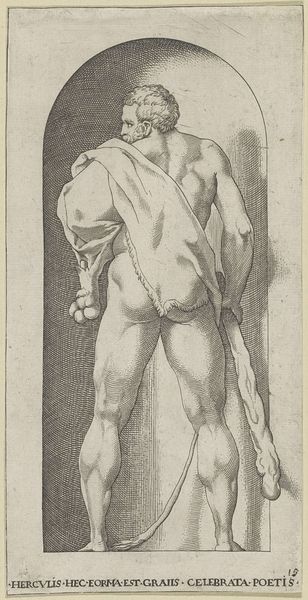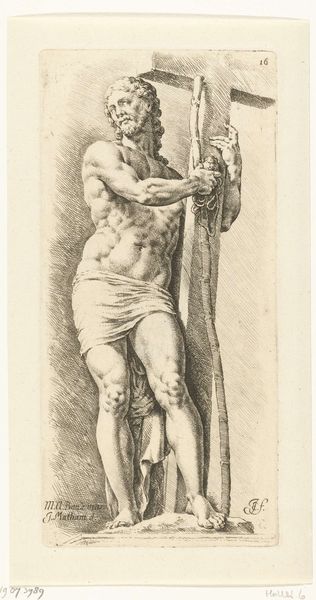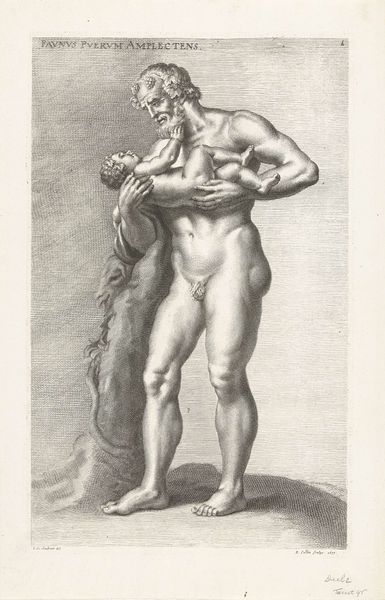
print, metal, sculpture, engraving
#
baroque
# print
#
metal
#
greek-and-roman-art
#
classical-realism
#
figuration
#
sculpture
#
line
#
history-painting
#
nude
#
engraving
Dimensions: height 227 mm, width 125 mm
Copyright: Rijks Museum: Open Domain
Cornelis van Dalen I created this print of the Beeld van Hercules Farnese te Rome, sometime in the 17th-century. Van Dalen’s print captures the imposing physique of the ancient sculpture from behind, offering a particular perspective on masculine power. The original sculpture, discovered in Rome during the Renaissance, quickly became a symbol of strength and virility, embodying ideals of the male form that were both admired and, perhaps, unattainable. Consider how the representation of Hercules, a mythological hero, intersects with notions of gender, power, and the male gaze. The artist's choice to depict Hercules from behind might invite viewers to contemplate not just his physical prowess but also his vulnerability, or even his burden. The hero's hands are clasped behind his back, suggesting a moment of contemplation or restraint, a divergence from traditional heroic portrayals. How does it feel to consider the weight of expectations and the performance of masculinity?
Comments
No comments
Be the first to comment and join the conversation on the ultimate creative platform.
